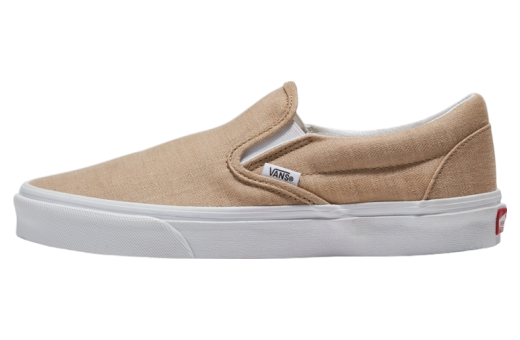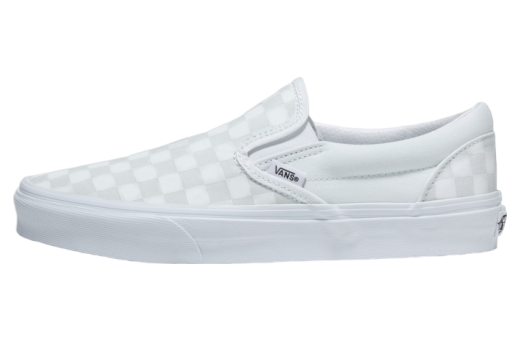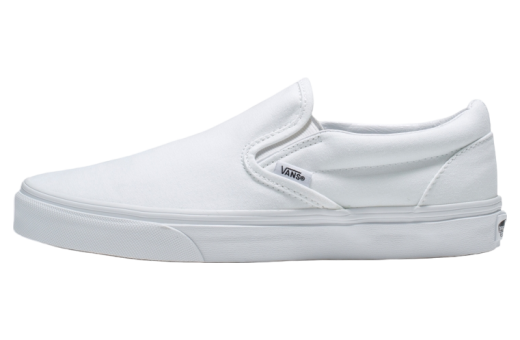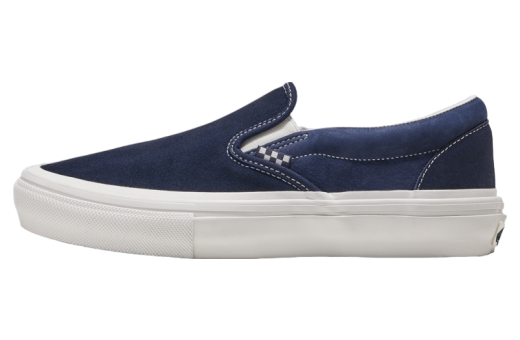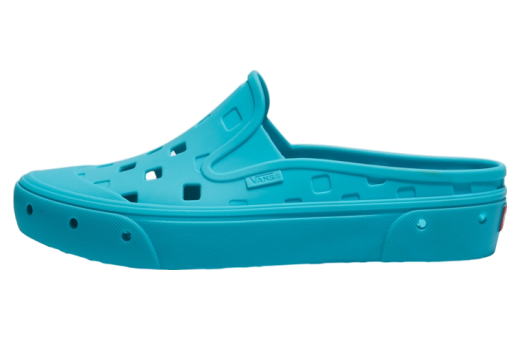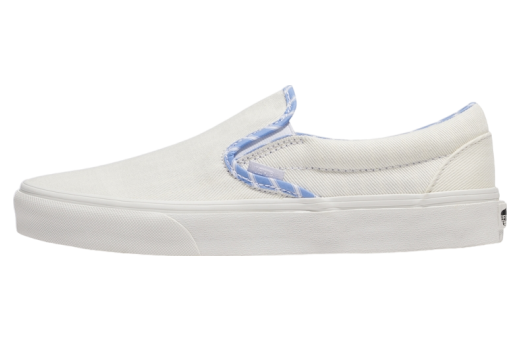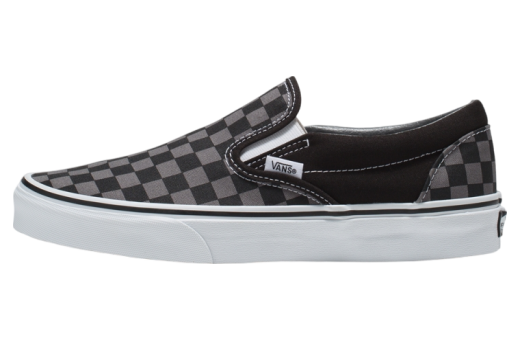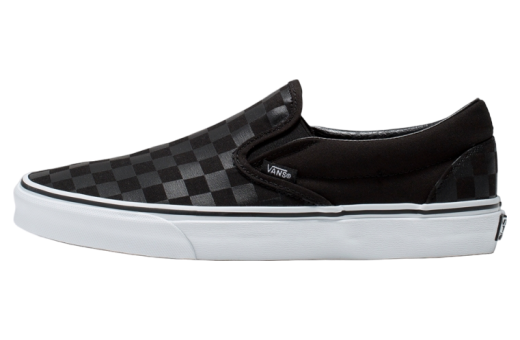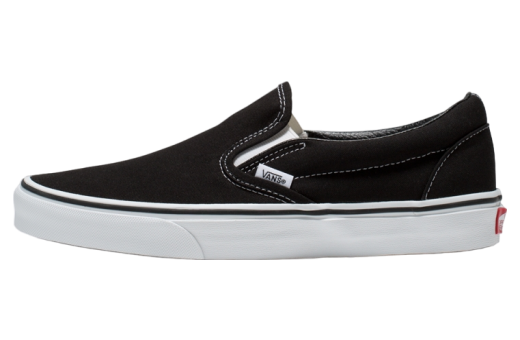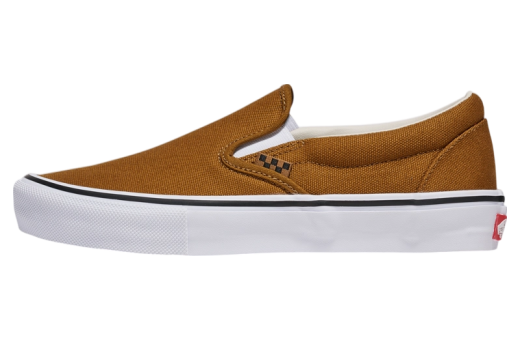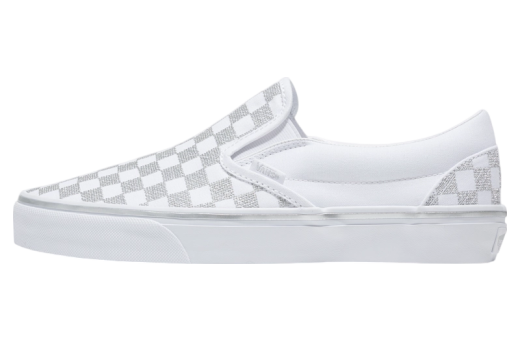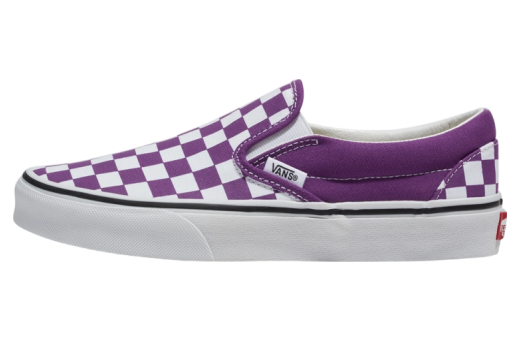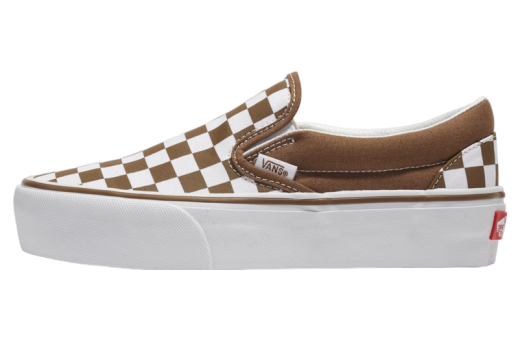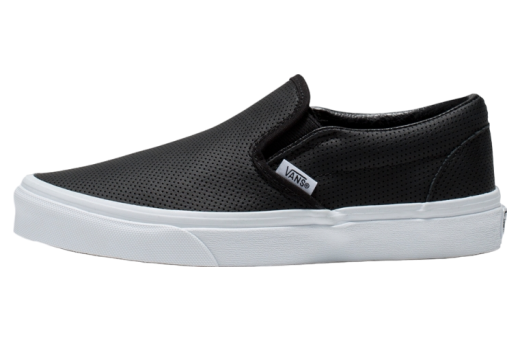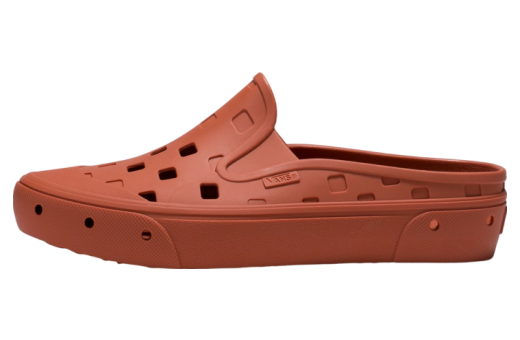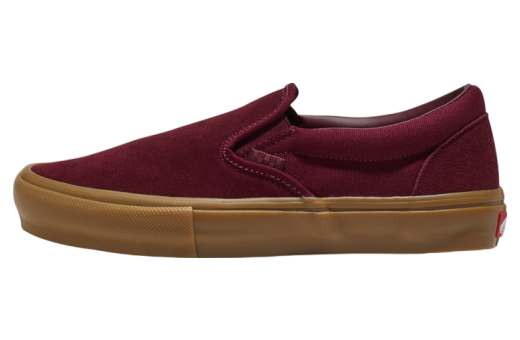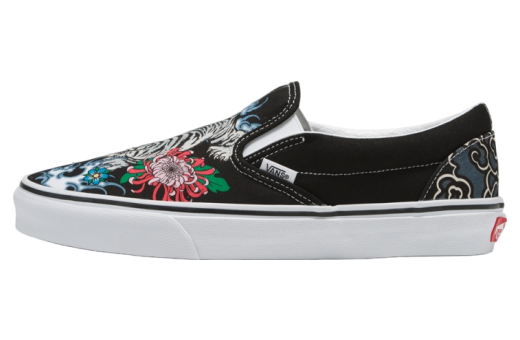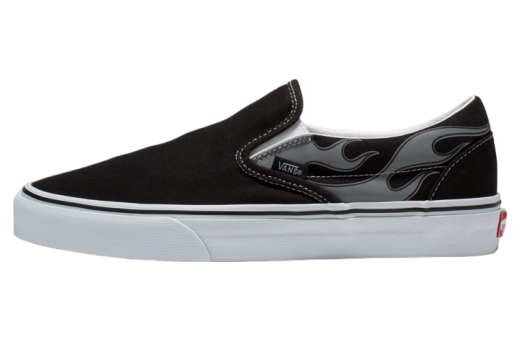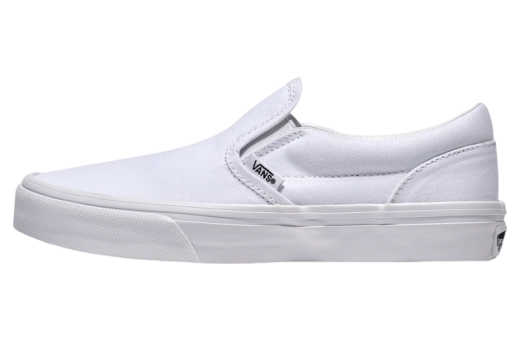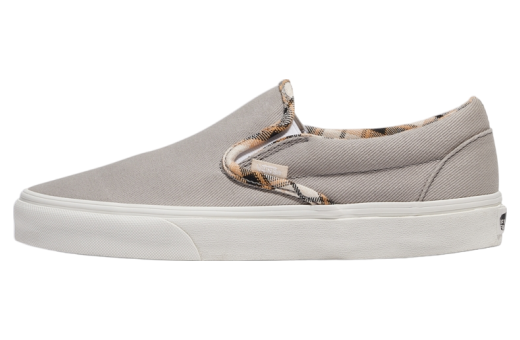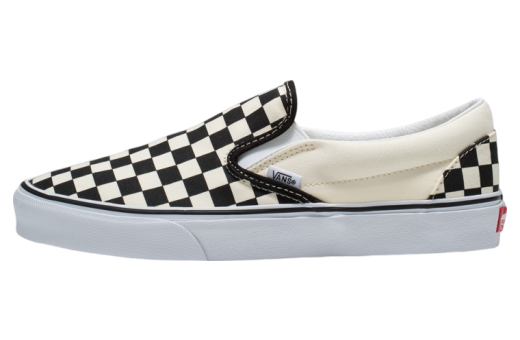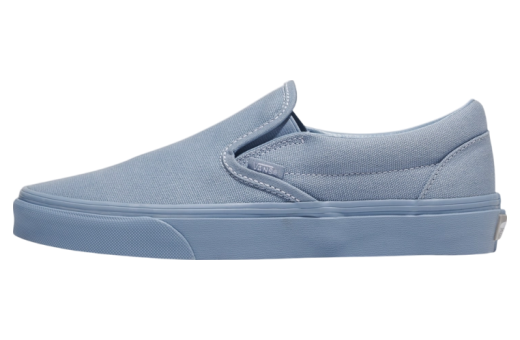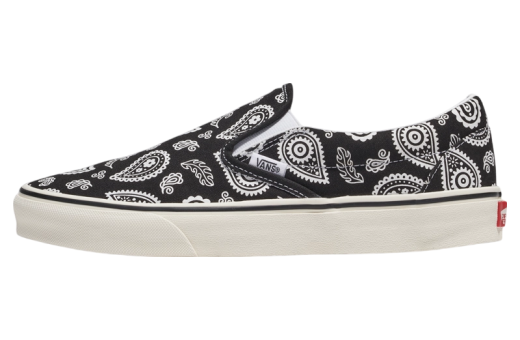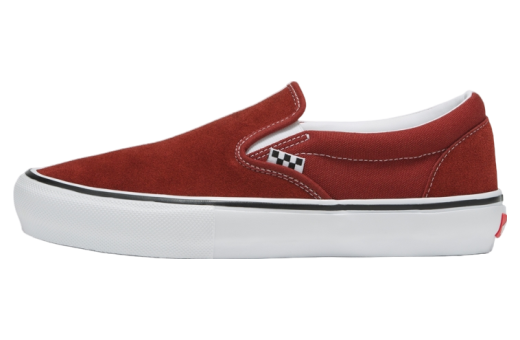Vans Slip-On
The Vans Slip-On is a classic sneaker that has stood the test of time, becoming a staple in both skate culture and everyday fashion since its introduction in 1977. Its design, characterized by a low profile, laceless structure, and a sturdy canvas upper, makes it remarkably easy and convenient to wear. The shoe's distinctive waffle rubber outsole provides excellent grip and durability, making it reliable whether you’re hitting the skate park or strolling through the city. The checkerboard pattern, one of its most iconic designs, gained tremendous popularity in the 1980s, partly due to its appearance in popular culture such as films and music videos, further cementing its status as an enduring fashion statement.
Additionally, the Vans Slip-On offers a versatile aesthetic that appeals to a wide range of personal styles. Its simplistic design allows it to be paired with almost any outfit, from casual jeans and shorts to more laid-back suits and dresses. Over the years, Vans has also released numerous special editions and collaborations, featuring unique patterns, colors, and materials, which attracts collectors and fashion enthusiasts alike. Despite changing fashion trends, the Vans Slip-On has maintained its relevance through a combination of timeless design, comfort, and a strong connection to its cultural roots in skateboarding and California’s laid-back lifestyle. Its popularity continues to transcend generations, proving that some styles are truly evergreen.
History of Vans Slip-On
The History of Vans Slip-On
Introduction
The Vans Slip-On, an iconic piece of footwear, has transcended generations, subcultures, and global fashion trends. Originally built for utility, the Slip-On has grown to occupy a unique place in both sportswear and lifestyle contexts. From skateparks to runways, this unassuming shoe has become a symbol of rebellion, creativity, and timeless style. The following history traces the journey of the Vans Slip-On, examining its origins, evolution, cultural impact, and future.Origins: Humble Beginnings in Anaheim
The Founding of Vans
The story of Vans begins in 1966 when Paul Van Doren, along with partners Gordon Lee and Serge Delia, founded the Van Doren Rubber Company in Anaheim, California. Van Doren had extensive experience in the shoe industry and envisioned creating a brand that combined quality craftsmanship with affordability. The company's unique selling point was its "made-to-order" business model, where customers could purchase shoes directly on the day they were made.Birth of the Classic Slip-On
The Slip-On made its debut in 1977, under the model name Style #48. It was inspired by existing deck shoes and aimed at the Southern California surf and skateboard community. The Slip-On’s design was simple: a laceless canvas upper, elastic side accents for easy wear, and the signature waffle sole, which provided superior grip and durability. This design effectively captured the laid-back, casual lifestyle of California’s youth.The Skateboarding Connection
Adoption by Skaters
The decentralized, yet closely-knit skateboarding community of the late 1970s quickly adopted the Vans Slip-On. Its waffle sole offered skaters unparalleled board feel and traction. Moreover, the simplicity and comfort of the design made the shoe highly desirable. As skateboarding culture permeated the West Coast, Slip-Ons became a common sight at skateparks and street sessions.Z-Boys and Rising Fame
The Z-Boys, a legendary skateboarding crew from Dogtown in Santa Monica, played a pivotal role in mainstreaming Vans among skaters. Their intense and stylish skateboarding style, combined with their preference for Vans shoes, garnered attention in the skateboarding scene and beyond. The crew's visible use of Vans Slip-Ons in numerous photographs and magazines catalyzed the shoe's popularity.Cultural Explosion: "Fast Times at Ridgemont High"
Hollywood Magic
While the skateboarding scene bolstered the brand's reputation in the late 1970s, it was the 1982 release of the film *Fast Times at Ridgemont High* that propelled the Vans Slip-On into mainstream consciousness. Sean Penn’s character, Jeff Spicoli, a quintessential California surfer dude, sported checkerboard Slip-Ons throughout the movie. This exposure created a cultural moment that resonated with young audiences across America.Checkerboard Phenomenon
The sudden rise in popularity of the checkerboard pattern led to Vans expanding its color and pattern offerings. The checkerboard Slip-On, in particular, became a symbol of counterculture cool. This innovation laid the groundwork for Vans' future collaborations and custom designs, signaling their entry into broader, mainstream fashion markets.Evolution and Innovation
Expanding Horizons
By the late 1980s and early 1990s, Vans was diversifying its product line and venturing into various other sports and lifestyle markets. The Slip-On remained a staple, evolving subtly with improved materials and manufacturing techniques. New colorways, patterns, and collaborations expanded the shoe's appeal to different demographics.Technical Enhancements
In response to feedback and changing trends, Vans introduced technical enhancements such as UltraCush footbeds for better comfort and impact cushioning, and Pro models with upgraded materials for durability. These iterative improvements ensured that the Slip-On remained relevant to both hardcore athletes and casual wearers.Influences and Collaborations
Streetwear and High Fashion
The Slip-On's status was further cemented through collaborations with streetwear giants like Supreme and Stüssy, as well as high-fashion labels such as Marc Jacobs and Kenzo. These collaborations brought the Slip-On into the worlds of art, music, and fashion, making it a versatile choice for a variety of cultural contexts.Artist Collaborations
Artists like Takashi Murakami and brands like Disney have contributed unique designs, transforming the Slip-On into a canvas for artistic expression. Such collaborations often become coveted collector’s items, blending the worlds of street art and commercial fashion seamlessly.Music Scene Adoption
The Vans Slip-On also found favor in the music scene, particularly within punk and hardcore communities. Bands like Bad Religion, Black Flag, and Green Day were frequently seen sporting the shoes both on and off stage. Vans’ Warped Tour, a traveling rock festival sponsored by the brand, further solidified this connection.Vans Slip-On in the 21st Century
Reinvention and Sustainability
Entering the new millennium, Vans continued to innovate while remaining true to its heritage. The introduction of the Eco Theory collection represented a significant step towards sustainability, featuring eco-friendly materials like organic cotton and natural rubber. This move appealed to environmentally conscious consumers, reflecting the industry's broader shift towards sustainable practices.Digital Age and E-Commerce
The rise of e-commerce and social media further extended Vans' reach. Platforms like Instagram and Pinterest became new battlegrounds for brand visibility. User-generated content featuring Vans Slip-Ons proliferated online, reinforcing the shoe's cultural currency. Digital customization tools allowed consumers to design their own unique Slip-Ons, broadening the appeal to a new generation of digital natives.Global Expansion
Vans' strategic expansion into international markets highlighted the brand's global appeal. Stores in major cities worldwide and targeted marketing campaigns helped the Slip-On transcend its Californian roots. Whether in Tokyo, Berlin, or São Paulo, the Vans Slip-On became a global icon of casual style and youthful rebellion.Social Impact and Philanthropy
Community Engagement
Vans has been active in supporting community-building activities and social causes. The brand's various initiatives, such as House of Vans, provide platforms for creative expression through art, music, and skateboarding. These community spaces epitomize Vans' commitment to fostering a sense of belonging and creativity among young people.Philanthropic Efforts
In response to various social issues, Vans has also engaged in philanthropic efforts. Partnerships with organizations like Skateistan (an international NGO that empowers youth through skateboarding and education) highlight the brand’s commitment to positive social impact. Vans continues to leverage its cultural capital to advocate for mental health, inclusivity, and environmental responsibility.Diversity and Inclusion Initiatives
Vans' commitment to diversity and inclusion is reflected in their marketing campaigns and internal policies. Efforts to represent a wider array of voices, faces, and stories in their campaigns have garnered praise and fostered a more inclusive brand image. Vans' workforce initiatives also emphasize creating a more inclusive and equitable workplace culture, recognizing the importance of diversity in driving innovation and sustaining relevance.The Future of Vans Slip-On
Continued Evolution
As fashion trends continue to evolve, Vans remains poised to adapt and innovate. The ongoing interest in retro and vintage styles bodes well for the Slip-On, which has already cemented its status as a classic. Future iterations are likely to incorporate cutting-edge materials and technologies, ensuring the Slip-On remains a fixture in modern wardrobes.Technological Integration
With the advent of smart textiles and wearable technology, future Vans Slip-Ons might integrate features such as health monitoring sensors or adaptive fit technology. These innovations could potentially redefine the boundaries between traditional footwear and tech-enhanced accessories.Sustainability Commitment
The fashion industry's growing emphasis on sustainability will likely influence the future of Slip-On design. From recyclable materials to eco-friendly production processes, Vans is expected to continue its efforts towards reducing environmental impact. Initiatives aiming at circular fashion models, where old shoes can be recycled into new ones, could redefine the brand's approach to sustainability.Conclusion
The Vans Slip-On has traversed an incredible journey from its modest beginnings to an enduring global icon. Its evolution is a testament to the brand's ability to adapt, innovate, and remain relevant across different cultural landscape changes. Synonymous with rebellion, individuality, and creative expression, the Slip-On remains more than just a shoe; it is a cultural touchstone that continues to inspire and unite a diverse range of fans worldwide.In the coming years, as Vans continues to push the boundaries of design, sustainability, and inclusivity, the Slip-On will undoubtedly retain its iconic status, embodying the spirit of each new generation that laces—or rather, slips—it on.
